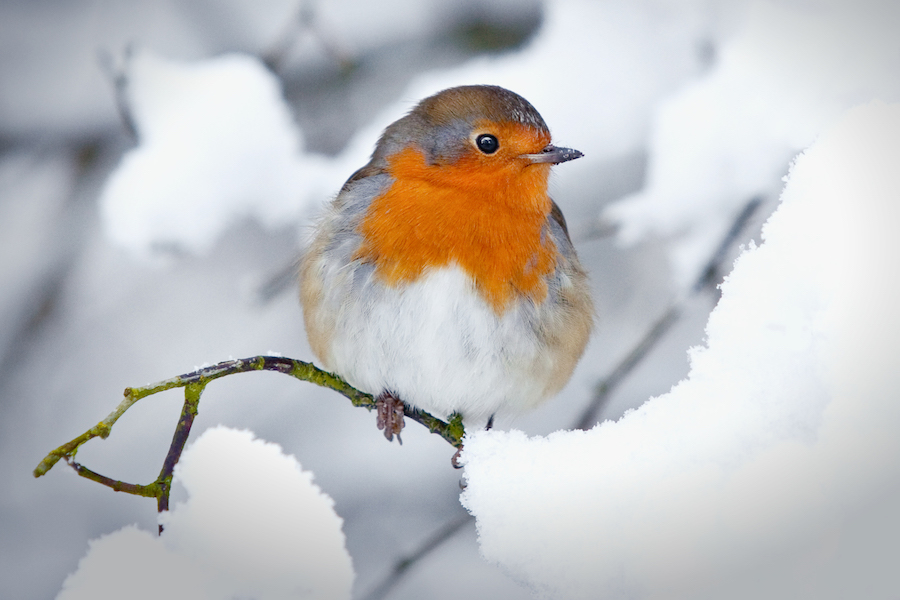10 things you should know about the most festive of all garden birds – the robin
These little cuties come into their own at Christmas
Be they sat on garden fence posts or their likeness emblazoned on half the Christmas cards that come through the door, it is definitely the season for one of our most recognisable garden birds.
In honour of National Robin Day (December 21) Sean McMenemy of Ark Wildlife shares his top robin related trivia…

1. British gardens make excellent habitat for robins with up to 250 breeding pairs per square mile. This means every British garden is likely to hold at least one nesting pair, with wildlife friendly gardens supporting even more.
2. Robins are frantic breeders. They can start nest building as early as January and can go on to have four or five broods of four to five eggs each per season. Sometimes the female will be incubating a clutch of eggs while the male continues to feed the previous brood.
3. Robins do not use the same nest more than once. However, they will stick to a territory and location in which they have previously reared a successful brood.
View this post on Instagram
4. With so many young being raised, why aren’t we inundated with robins? Sadly, life expectancy is very short for robins. The average robin lives less than a year, with winter devastating their numbers.
5. Male and female robins look alike, both having red breasts. These are used along with song to proclaim and hold territories year-round. Both sexes will fight off intruders in their own territories until a pair bond has formed. At this point the male becomes very aggressive, singing and fighting to repel any intruders on their shared patch.
6. Robins sing all year round and will even sing throughout the night if disturbed by loud noises such as car horns, thunder, or fireworks. Artificial streetlights will also trigger singing and robins can be seen sitting under street lamps singing throughout long winter nights in towns and cities.
7. Robins really are ‘the early bird’ with specially adapted eyes to see in low light, allowing them to start feeding earlier than other birds and even feed at night under street lamps.
View this post on Instagram
8. Robins evolved following pigs and boar as they rootled about disturbing worms and invertebrates that the robin could eat. In modern Britain, the lack of wild boar means robins follow gardeners who effectively do the same job. This habit of following anyone digging led to the robin being affectionately known as the ‘gardener’s friend’.
9. Robins are omnivores meaning they will eat a wide range of foods including seeds, fruit, insects, and worms. This means they are easy to attract and feed in gardens by offering a range of bird food including suet pellets, mealworms, and seed mixes.
10. And finally, why is the robin associated with Christmas? It’s because Victorian postmen wore red tunics and were known as ‘robins’ or ‘robin redbreasts’. After the uniform changed, the goodwill linked to postmen delivering Christmas cards got transferred to the bird and we still celebrate robins on Christmas cards to this day.
The Press Association
Latest posts by The Press Association (see all)
- Special stamps to mark 80th anniversary of VE Day - April 24, 2025
- Test your knowledge with our penguin-themed quiz - April 24, 2025
- Prince Louis shows off missing front teeth in new photo to mark seventh birthday - April 23, 2025
- Why does hearing get worse as we get older? - April 23, 2025
- Top scented plants for your garden, from a Kew expert - April 22, 2025



















